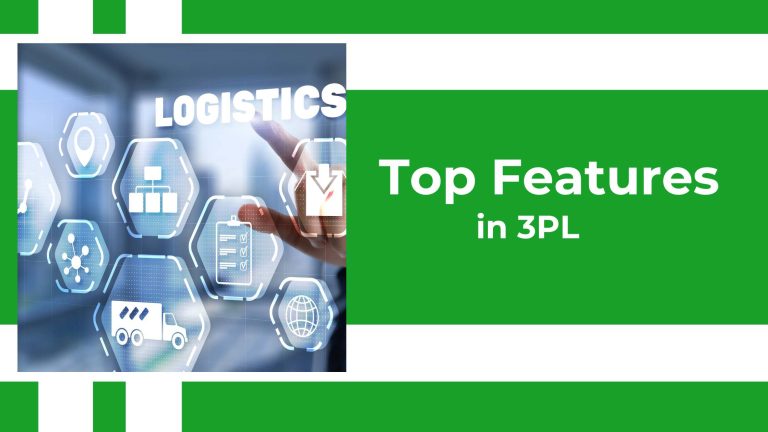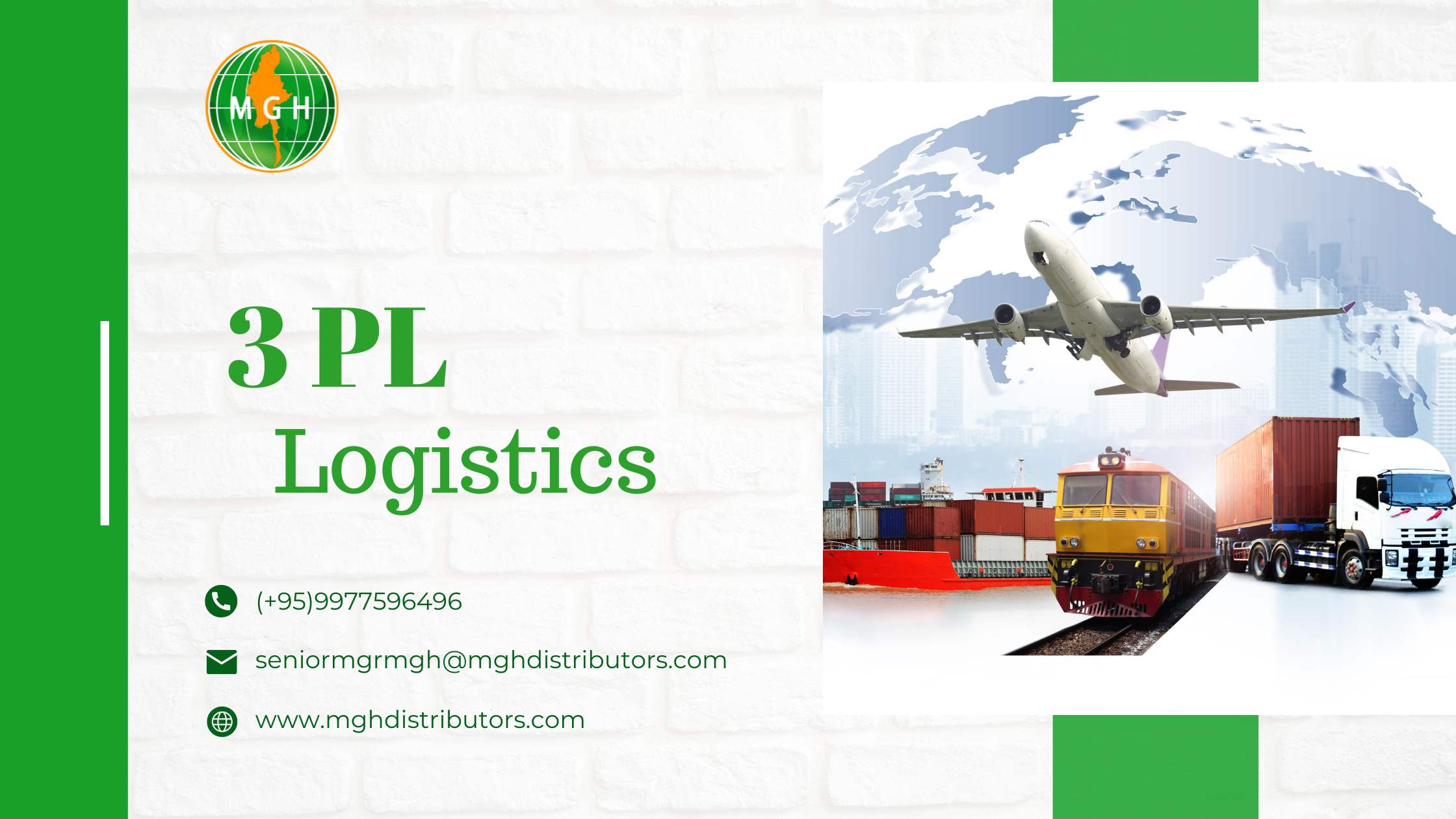The logistics industry is the backbone of the supply chain as it manages and coordinates the movement of raw materials, final goods, and information from the starting point (manufacturer/producer) to its final destination (consumers).
The final destination varies depending on what is being delivered. For raw materials, the final destination would be the manufacturer; for final goods, it would be the consumer; and for the information, it could be either from supplier to manufacturer or from supplier to consumer.
3PL has the same role as the logistics in the supply chain. The main difference is that the logistics are in-house in some companies, while many other companies rely on other businesses that handle logistics.
These businesses manage everything, starting from choosing the carrier, storing goods in the warehouses, and coordinating the overall supply chain process, and are popularly known as 3PL (Third-Party Logistics).
Let’s learn about 3PL Logistics in detail in this blog.
What are 3PL Logistics?
According to Prof. John J. Coyle, “Third-party logistics (3PL) refers to the practice of outsourcing logistics operations, such as transportation, warehousing, and inventory management, to an external service provider. This allows companies to focus on their core business activities while leveraging the expertise and efficiency of specialized logistics providers.”
In simple words, third-party logistics, or 3PL logistics, are the businesses that help companies manage their logistics and supply chain operations by handling the movement of raw materials and finished goods, choosing the right carrier, storing the goods in the warehouses, managing inventory, and coordinating the supply chain processes so the companies can focus on their core activities.
Role of 3PL in e-commerce and traditional businesses
3PL, or order fulfillment, has certain key roles to play in both e-commerce and traditional businesses. Let’s explore each of them one by one:
E-Commerce:
In e-commerce, consumers place orders through online platforms like Amazon and Flipkart instead of visiting a local retail store.
Order Fulfillment:
The third-party logistics providers receive the order placed by the customer. They then pick up the right product, pack it in a secure yet sustainable package, and manage all the shipping processes to deliver the product to the consumer in a predefined time.
Inventory Management:
The third-party logistics providers handle the inventory by maintaining the right level of stock in the warehouses to avoid overstocking or understocking of products. They also manage the reordering of the stock to meet the customers’ demand when they place their orders online.
Returns Management:
Not only the forward logistics; in the case of e-commerce, the third-party logistics providers also handle the reverse logistics. They look after the products returned by the customers for refund or exchange purposes and deliver the services accordingly.
Traditional Business:
Traditional businesses are popularly known as retail businesses, where customers purchase goods by visiting the store. In the case of traditional businesses, the customers receive their products immediately after the payment, unlike in e-commerce, where they have to wait for a few days to receive their product after placing their order.
Transportation Management:
The third-party logistics providers look after the transportation of finished goods from the manufacturer to warehouses and from the warehouses to the retailers. Here, the finished goods are not directly sold to customers. Instead, the purchasing process passes through the retailers.
Warehousing:
Even the retailers have warehouses where they store the finished goods they purchase in bulk from the manufacturers. The third-party logistics provider manages the retailers’ warehouses by maintaining the inventory level.

How 3PL Companies Operate: Process & Functions
Third-party logistics (3PL) companies offer a range of services to manage and optimize various aspects of the supply chain for their clients.
1. Warehouse & Inventory Management –
Storage Solutions:
3PL providers offer warehouse facilities where goods are stored. These warehouses are equipped with shelving, pallet racks, and climate control if needed.
Inventory Tracking and Management Systems:
3PL companies use advanced inventory management systems (IMS) to keep track of inventory levels in real-time, automate reordering processes, and manage inventory across multiple locations.
2. Process Automation –
Warehouse Management Systems (WMS):
WMS software manages warehouse operations like tracking inventory, optimizing storage space, controlling picking and packing processes, and providing real-time updates.
Transportation Management Systems (TMS):
TMS software plans and optimizes routes, schedules shipments, manages carrier relationships, monitors transportation costs, and provides visibility into shipment status.
Robotics and Automation:
Robotics and automated systems are used to pick, pack, and sort products to reduce labor costs and improve efficiency during peak hours.
3. Order Fulfillment and Reordering –
Picking:
The third-party logistics providers use barcode scanners and automated picking systems to select items from the warehouse based on customer orders. They utilize different methods like single-order picking, batch picking, and zone picking to pick the order.
Packing:
Through automated packing systems and labeling machines, the 3PL logistics providers picked items for shipment. They then pack products securely, label them, and prepare shipping documents for the received order.
Shipping:
In this step, the orders are dispatched from the warehouse to the customer or retail locations. The 3PL logistics providers integrate TMS in shipping carriers to track and manage shipments.
Reordering:
The third-party providers use IMS to forecast demand and automate the reorder processes to replenish inventory based on stock levels and demand forecasts.
4. Freight Shipping and Receiving –
Transportation Management:
The 3PL logistics providers use TMS to plan routes, manage shipments, and optimize transportation costs. Their main purpose is to oversee the movement of goods from the warehouse to customers or between locations.
Handling Inbound Shipments:
The third-party logistics providers manage the receipt of goods from suppliers by using WMS and automated systems to streamline the receiving process and update inventory records.
Handling Outbound Shipments:
The 3PL logistics providers manage the dispatch of goods to customers. The functions include packaging and labeling the product and coordinating with carriers for secure and timely delivery of the order placed.

Benefits of 3PL logistics
3PL logistics providers are the businesses that companies hire to outsource their logistics and supply chain processes. Let’s see what their benefits are:
1. Boost Your Efficiency –
The third-party logistics providers enable the companies to focus on their main activities by taking over the burden of managing logistics. They streamline logistics operations by optimizing warehouse, inventory management, and order fulfillment processes, saving costs and improving operational efficiency.
2. Expand Your Reach –
3PL providers offer access to extensive global networks and scalable solutions that enable businesses to expand into new markets and handle fluctuations in demand with ease.
3. Improve Customer Service –
The third-party logistics providers help businesses achieve faster and more reliable delivery times, enhance order tracking transparency, and manage returns more efficiently, which improves customer satisfaction and builds customer loyalty and trust towards the business.
4. Automate Logistics with Ease–
3PL providers implement advanced technologies like Warehouse Management Systems (WMS), Transportation Management Systems (TMS), and robotics to automate logistics operations to improve accuracy, reduce manual errors, and optimize both inventory management and transportation processes.

3PL features to look for
There are a few features that you need to consider if you are planning to outsource logistics services for your business:
1. Fast Shipping –
Select a third-party logistics provider that offers efficient and speedy shipping solutions. The fast order processing and quick delivery of the products enhance customer satisfaction, which helps them to stay loyal to your brand.
2. Return Processing –
Sometimes, not all 3PL logistics providers offer return processing services. So, while choosing third-party logistics, make sure they provide the return processing services to efficiently handle the return and exchange smoothly.
3. Inventory Management –
Always opt for a 3PL provider that uses advanced technology to manage inventory, as it simplifies the operations by automating the reporting and reordering services, which are handled manually, and provides real-time tracking of inventory levels.
4. Kitting & Customization –
Kitting and customization mean assembling products, packaging them according to specific requirements, and providing value-added services. Choose third-party logistics providers that offer kitting and customization services to enhance the final product’s presentation and appeal.
5. Technology Usage –
Always choose third-party logistics providers that integrate technologies like Warehouse Management Systems (WMS), Transportation Management Systems (TMS), and automation tools to pace up the operations instead of depending on laborers for most of their work. This will enhance the overall performance of the supply chain and logistics.
3PL shortcomings
While you know the benefits of 3PL and the features to look for while choosing one for your business. You should also be aware of their shortcomings:
Lack of Control
Partnering with a 3PL provider often means relinquishing some control over logistics operations. This can lead to challenges in overseeing processes directly, ensuring quality, and aligning operations with specific company standards or requirements.
Upfront Cost
While 3PL services can lead to long-term cost savings, there may be significant upfront costs associated with setting up the partnership. These costs can include integration fees, setup charges, and initial service agreements, which might be a financial strain for some businesses.
Domain Expertise
Not all 3PL providers have expertise in every industry or logistics niche. Businesses may face limitations if their 3PL partner lacks specific domain knowledge or experience relevant to their industry, which can affect service quality and efficiency.

Future Trends in 3PL Logistics
Emerging Technologies (AI, IoT, Blockchain)
The future of 3PL logistics is increasingly driven by emerging technologies such as artificial intelligence (AI), the Internet of Things (IoT), and blockchain. AI enhances predictive analytics and automation, improving decision-making and operational efficiency. IoT devices provide real-time tracking and monitoring of goods, enhancing visibility and responsiveness across the supply chain. Blockchain technology ensures greater transparency and security in transactions and documentation, reducing fraud and increasing trust between parties.
Sustainability and Green Logistics
There is a growing emphasis on sustainability and green logistics within the 3PL industry. Providers are adopting eco-friendly practices such as reducing carbon footprints through energy-efficient warehouses, using electric or hybrid vehicles for transportation, and optimizing routes to minimize emissions. Implementing sustainable practices not only helps in complying with regulations but also meets the increasing consumer demand for environmentally responsible operations.
Adapting to Changing Consumer Expectations
3PL providers are evolving to meet the shifting expectations of consumers, who increasingly demand faster delivery times, greater flexibility, and more personalized services. This trend drives the adoption of technologies that enable quicker order processing, enhanced tracking capabilities, and customized delivery options. Providers are also focusing on improving the overall customer experience by offering solutions that align with the growing preference for convenience and transparency in logistics.
The Bottom Line
3PL logistics plays a critical role in optimizing supply chain operations by managing various aspects like order fulfillment, 3PL warehouse operations, and transportation. With the ability to boost efficiency, expand reach, improve customer service, and automate processes, 3PL logistics providers are invaluable for businesses aiming for growth. As technology advances and consumer expectations evolve, leveraging 3PL services ensures companies stay competitive and responsive in a dynamic market.



